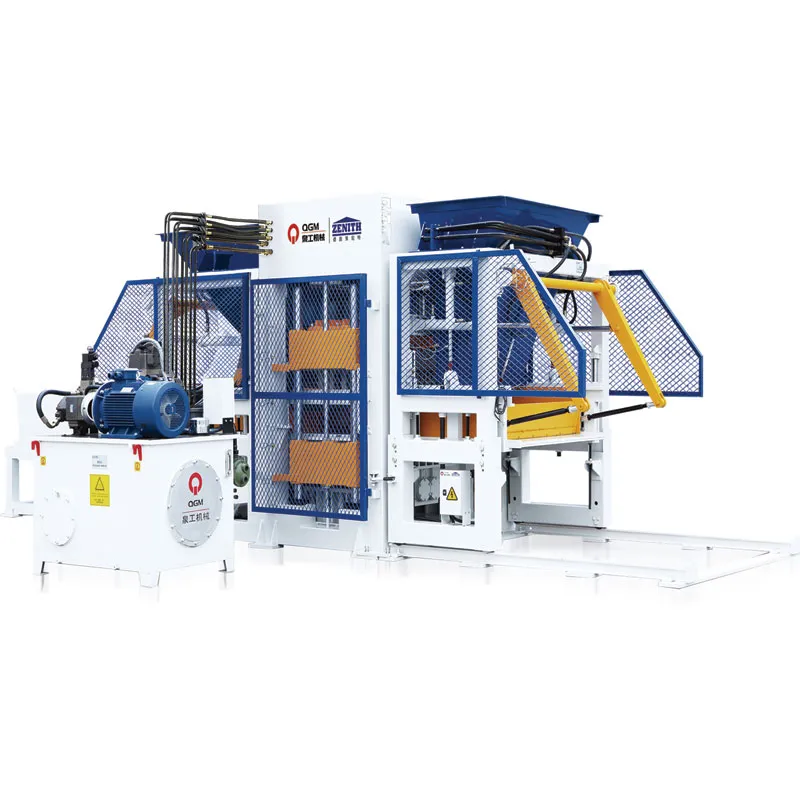How does a concrete block machine work?
2024-09-20
A concrete block machine is designed to manufacture concrete blocks or bricks by compressing and molding concrete mixtures into specific shapes and sizes. These machines are widely used in the construction industry for producing blocks that are essential for building walls, foundations, and other structures. Here’s how a concrete block machine typically works:

1. Preparation of the Concrete Mixture:
- The process begins by preparing a mixture of cement, sand, gravel (aggregates), and water.
- The proportions of the ingredients vary depending on the type and strength of the block being produced.
- The concrete mix is either prepared manually or automatically using a concrete mixer.
2. Filling the Mold:
- The prepared concrete mixture is fed into the hopper of the machine.
- From the hopper, the mixture is evenly distributed into a set of molds that will shape the blocks. These molds are designed to form the blocks in the desired size and shape (e.g., hollow, solid, interlocking).
3. Compaction and Vibration:
- After filling the molds, the machine uses vibration and compression to compact the concrete mixture within the molds.
- Vibrators shake the molds to remove air bubbles and ensure that the concrete is densely packed.
- Hydraulic or mechanical presses apply pressure to further compress the mixture, improving the strength and durability of the blocks.
4. Curing of the Blocks:
- Once the blocks have been compacted, they are ejected from the molds.
- The fresh blocks are then transferred to a curing area where they need to harden.
- Curing is a crucial step because it allows the concrete to achieve its required strength. This process can be done through natural curing (air-dried) or accelerated curing using steam chambers (for faster production).
5. Ejection and Stacking:
- The finished blocks are automatically or manually ejected from the machine.
- They are carefully stacked to allow for the curing process.
- After curing, the blocks are ready for use or transportation.
Types of Concrete Block Machines:
1. Manual Block Machines:
- Simple, manual machines that require human effort to fill, compress, and eject the blocks. They are cost-effective for small-scale production.
2. Semi-Automatic Block Machines:
- These machines perform some functions automatically, like feeding the mixture into molds and compressing the blocks, but still require manual operations for some tasks.
3. Fully Automatic Block Machines:
- Fully automated machines that handle the entire block-making process, from mixing the concrete to curing and stacking the blocks. They are ideal for high-volume production and require minimal human intervention.
Key Features:
- Hydraulic Press: Ensures high pressure is applied for strong block formation.
- Vibrating Mechanism: Eliminates air pockets and ensures uniform density.
- Molds: Available in different shapes and sizes for creating various types of blocks (solid, hollow, paving blocks, etc.).
Advantages:
- Efficiency: Produces large quantities of uniform, high-quality blocks in a short period.
- Consistency: Blocks have uniform size, shape, and strength.
- Customization: Can produce different types of blocks for various construction needs.
By automating the production process, concrete block machines enhance productivity, reduce labor, and deliver consistent, high-quality blocks for construction projects.


